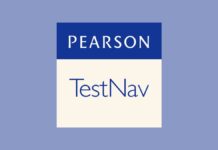Most of the corporate organizations and educational institutions use either a black or whiteboard to impart training. However, with the advent of digital learning technology and whiteboard animation, they can experience a massive transformation. Using animations in eLearning enables you to grab the attention of the learners and impart knowledge in a faster and more engaging way. Animations in eLearning like explainer videos, hand-placed, and whiteboard are a few of the effective ways to bring any content to life.
With whiteboard animation, learners can get ideas or concepts through a series of live drawings. Let’s explore what it takes to create an impactful whiteboard animation.
Grab Learner’s Attention
You can use whiteboard animation to draw objects repeatedly, which can be one of the effective ways of capturing the learners’ attention. A Microsoft study states that the human attention span is about 8 seconds. In a typical whiteboard animation, there are about 7-8 objects drawn on an online virtual whiteboard which can seemingly capture the learner’s attention span.
Engaging Images
Images and illustrations play a crucial role in making a whiteboard animation video. Impactful imagery can instantly connect with the audience, even in your absence. You must ensure that the illustrations are developed following the audience profile and their social or cultural inclination in mind. Depending on the requirements, the illustrations can be both reworked upon and tweaked as they are either computer-generated or hand-drawn.
Insert Videos In The eLearning Module
You can perform actions based on adult learning principles by creating interactive whiteboard animation videos using authoring tools. With the availability of various authoring tools like Articulate Storyline and Adobe Captivate, you can import and insert a video in your eLearning module. By doing this, you can break the monotony of the learning module, especially if it exceeds thirty minutes. This will help you in capturing the learner’s attention to some vital topics and increase the level of learner’s engagement.
Accompanying Background Music
For creating a more significant impact, you can add music and sound effects as these are powerful tools to exhilarate the video. Even if the presented scene before the learner is an illustration, they create realistic scenarios. For example, an animated illustration of a door opening accompanied by a ‘creak’ will enable the learner to perceive it as real.
In Conclusion
Whiteboard animations, being short and crisp, align easily with the growing requirements of the modern corporate learner. Many organizations realize the benefits of using this method in their eLearning courses. Since whiteboard animations are engaging, fun, and intuitive, they can develop a practical learning experience for learners. With all the translations into a digital mode, whiteboard animation has its uses, and it is here to stay in the future.




































 Online casino
Online casino
